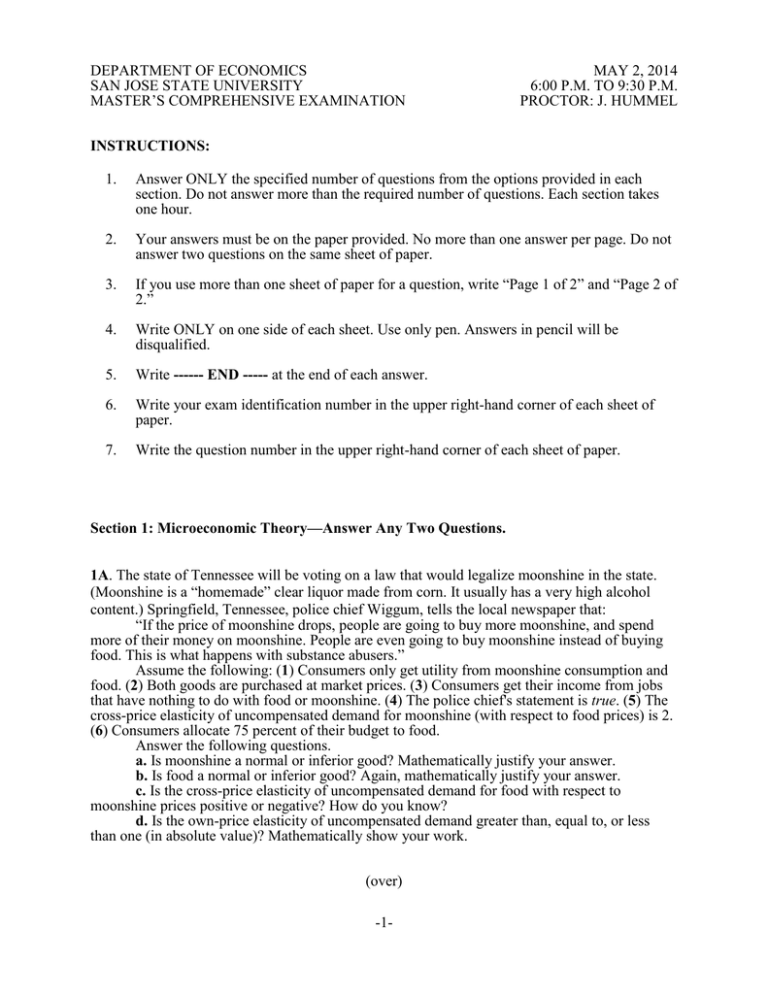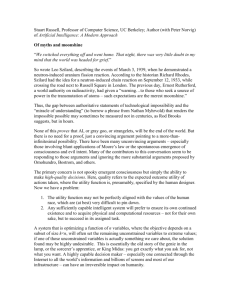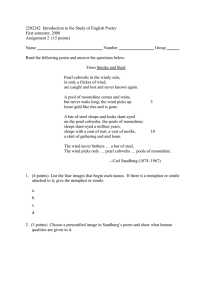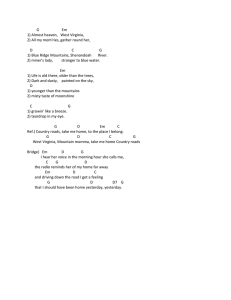DEPARTMENT OF ECONOMICS MAY 2, 2014 SAN JOSE STATE UNIVERSITY
advertisement

DEPARTMENT OF ECONOMICS SAN JOSE STATE UNIVERSITY MASTER’S COMPREHENSIVE EXAMINATION MAY 2, 2014 6:00 P.M. TO 9:30 P.M. PROCTOR: J. HUMMEL INSTRUCTIONS: 1. Answer ONLY the specified number of questions from the options provided in each section. Do not answer more than the required number of questions. Each section takes one hour. 2. Your answers must be on the paper provided. No more than one answer per page. Do not answer two questions on the same sheet of paper. 3. If you use more than one sheet of paper for a question, write “Page 1 of 2” and “Page 2 of 2.” 4. Write ONLY on one side of each sheet. Use only pen. Answers in pencil will be disqualified. 5. Write ------ END ----- at the end of each answer. 6. Write your exam identification number in the upper right-hand corner of each sheet of paper. 7. Write the question number in the upper right-hand corner of each sheet of paper. Section 1: Microeconomic Theory—Answer Any Two Questions. 1A. The state of Tennessee will be voting on a law that would legalize moonshine in the state. (Moonshine is a “homemade” clear liquor made from corn. It usually has a very high alcohol content.) Springfield, Tennessee, police chief Wiggum, tells the local newspaper that: “If the price of moonshine drops, people are going to buy more moonshine, and spend more of their money on moonshine. People are even going to buy moonshine instead of buying food. This is what happens with substance abusers.” Assume the following: (1) Consumers only get utility from moonshine consumption and food. (2) Both goods are purchased at market prices. (3) Consumers get their income from jobs that have nothing to do with food or moonshine. (4) The police chief's statement is true. (5) The cross-price elasticity of uncompensated demand for moonshine (with respect to food prices) is 2. (6) Consumers allocate 75 percent of their budget to food. Answer the following questions. a. Is moonshine a normal or inferior good? Mathematically justify your answer. b. Is food a normal or inferior good? Again, mathematically justify your answer. c. Is the cross-price elasticity of uncompensated demand for food with respect to moonshine prices positive or negative? How do you know? d. Is the own-price elasticity of uncompensated demand greater than, equal to, or less than one (in absolute value)? Mathematically show your work. (over) -1- DEPARTMENT OF ECONOMICS SAN JOSE STATE UNIVERSITY MASTER’S COMPREHENSIVE EXAMINATION MAY 2, 2014 6:00 P.M. TO 9:30 P.M. PROCTOR: J. HUMMEL 1B. Given the utility function U = (x + 2) (y + 1) and budget constraint B = $260. Also given that Px = $8and Py = $12: a. In a sentence or two tell me what is the economic meaning of the term “marginal utility.” b. Write down a general formula for the marginal utility of x. The formula should not depend on the form of the utility function above. c. What is the mathematical expression for marginal utility of x, for the above utility function? d. In a sentence or two tell me what is the economic meaning of the term “marginal rate of substitution.” e. Write the budget constraint equation, and the Lagrangian function. f. Use the Lagrange method to find the optimal quantities demanded of the two goods and the value for the Lagrange multiplier. g. Suppose the budget constraint B increases from 260 to 280. What is the approximate increase in the optimal value of U(x,y)? (You must use the property of the Lagrange multiplier to calculate.) 1C. Given a production function Q = f(K, L) = K1/2L. Assume that the unit price of Q is $200, the wage rate is $2, and the unit price of K is $4. a. Write the objective function of the profit-maximizing firm. b. Find the optimal value of K and L. c. Check the second order conditions to determine if the above K and L can maximize profit. -2-






